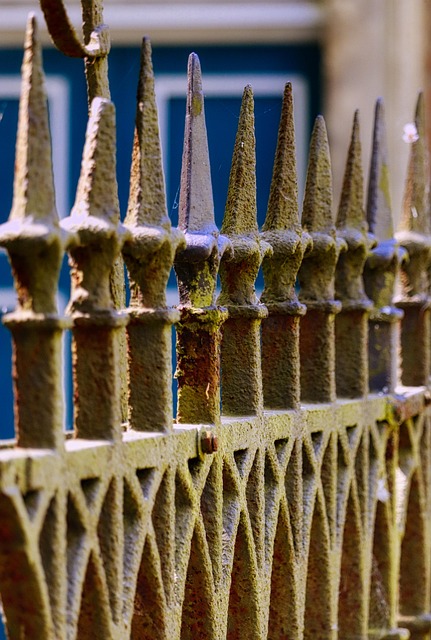Coastal areas present unique challenges for fencing due to harsh weather conditions and exposure to salt water. Durable wooden fencing offers an attractive and sustainable solution. This article explores the key considerations for selecting and maintaining robust wood fences in coastal environments, including understanding local climate demands, choosing resilient wood species, and implementing effective installation and maintenance practices. By following these guidelines, homeowners can ensure their fences withstand the test of time and harsh marine elements.
- Understanding Coastal Fencing Challenges
- Benefits of Durable Wooden Fencing
- Choosing the Right Wood Species
- Installation Techniques for Stability
- Maintenance Tips for Longevity
Understanding Coastal Fencing Challenges
Coastal areas present unique challenges when it comes to fencing due to their harsh, often unpredictable, environments. Strong winds, salty air, and frequent rainfall can take a toll on traditional fencing materials, leading to frequent repairs or replacements. Additionally, coastal fencing needs to withstand potential impact from waves or floating debris during storms, requiring robust and durable construction.
The specific conditions in these areas demand specialized materials and designs that can resist corrosion, decay, and physical damage. Wooden fences, for instance, need to be treated with special preservatives and sealed to protect against moisture intrusion and salt content in the air. These measures ensure the longevity of coastal fencing, maintaining both its aesthetic appeal and structural integrity over time.
Benefits of Durable Wooden Fencing
Durable wooden fencing offers an array of benefits for coastal areas. Firstly, it provides a natural and aesthetically pleasing barrier that complements the surrounding environment. Unlike synthetic materials, wood adds warmth and character to the landscape, creating a harmonious look that many homeowners appreciate. Secondly, durable wooden fencing is highly effective at preventing erosion caused by strong winds and salty air, which are common in coastal regions. The robust construction of these fences allows them to withstand harsh weather conditions, ensuring the protection of properties and landscapes.
Additionally, this type of fencing can be a cost-effective solution in the long run. While initial installation costs may be higher than other materials, wooden fences have a longer lifespan and require less maintenance compared to their synthetic counterparts. Regular cleaning and minimal repairs can keep them looking new for years, making them a smart investment for coastal properties.
Choosing the Right Wood Species
When selecting wood for coastal fencing, understanding the local climate and environmental conditions is paramount. The wood’s resistance to moisture, salt content in the air, and exposure to UV rays plays a significant role in its longevity. Hardwood species like cedar, redwood, and teak are excellent choices due to their natural resistance to decay and insects. These woods have dense structures that repel water and prevent mold growth, making them ideal for coastal environments.
Additionally, looking for wood with a high Janka hardness rating is beneficial. This rating indicates the wood’s resistance to denting and cracking under pressure, ensuring your fence can withstand harsh weather conditions. Treated or preservative-infused woods should also be considered to enhance their durability further.
Installation Techniques for Stability
When installing wooden fencing in coastal regions, it’s paramount to employ techniques that ensure stability against harsh weather conditions, including strong winds and salty air. One proven method involves digging deep posts into the ground, securing them with concrete anchors for added strength. This process creates a solid foundation, preventing the fence from tilting or shifting during storms.
Additionally, using brackets and straps at strategic points along the fence line enhances structural integrity. These hardware components distribute weight evenly and connect individual panels securely, minimizing the risk of damage from coastal elements. Regular maintenance, such as re-sealing and painting, also plays a crucial role in prolonging the life of these durable wooden fences.
Maintenance Tips for Longevity
To ensure your durable wooden fence remains in excellent condition alongside the coast, regular cleaning and maintenance are essential. Saltwater and high humidity levels can accelerate wood degradation, so a bi-annual deep clean is recommended. Use a pressure washer to remove any built-up salt or grime, followed by a gentle brush to loosen stubborn debris. After cleaning, apply a fresh coat of marine-grade sealant to protect the wood from moisture penetration.
Throughout the year, check for loose or damaged boards and nails. Promptly replace any worn components and ensure proper fastening to prevent warping or shifting. Additionally, consider painting or staining your fence every few years to enhance its aesthetics and provide extra protection against coastal elements.
